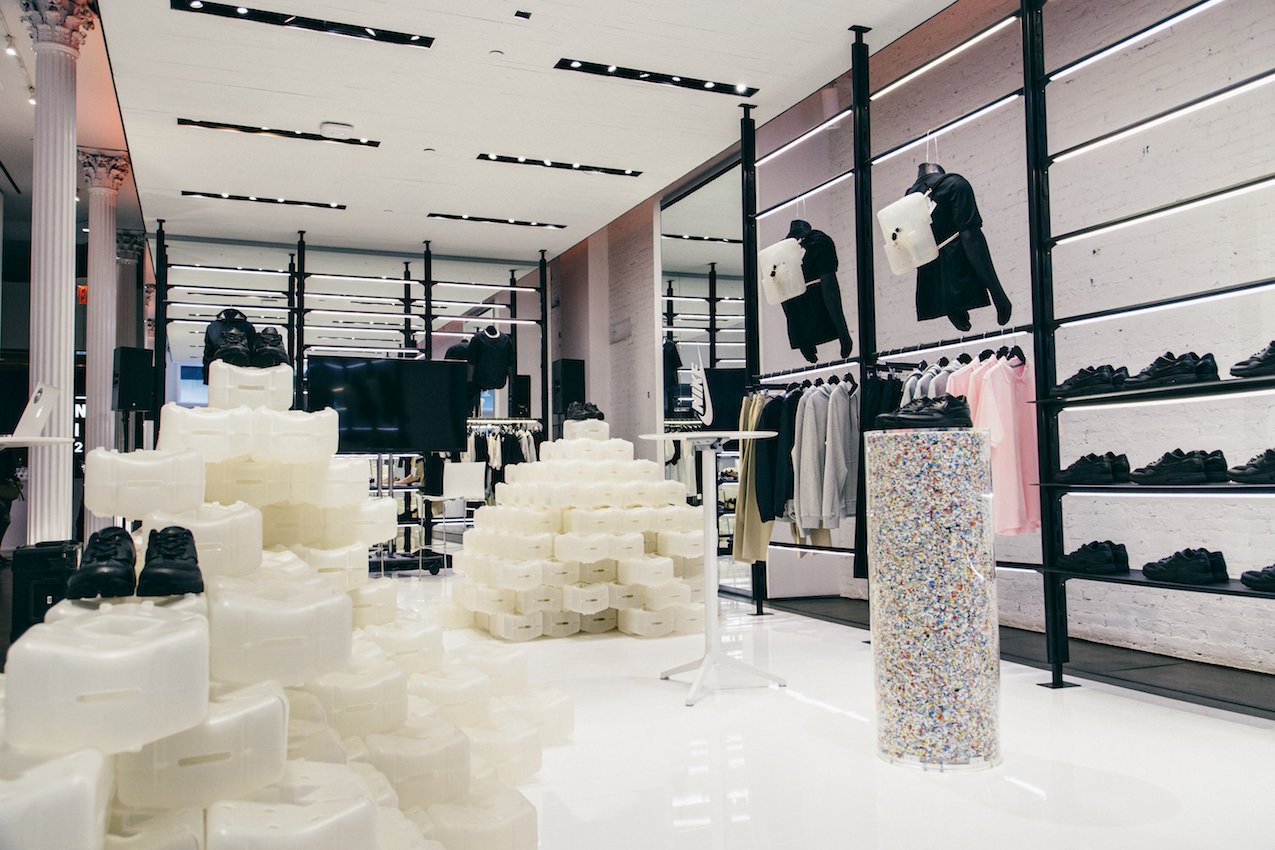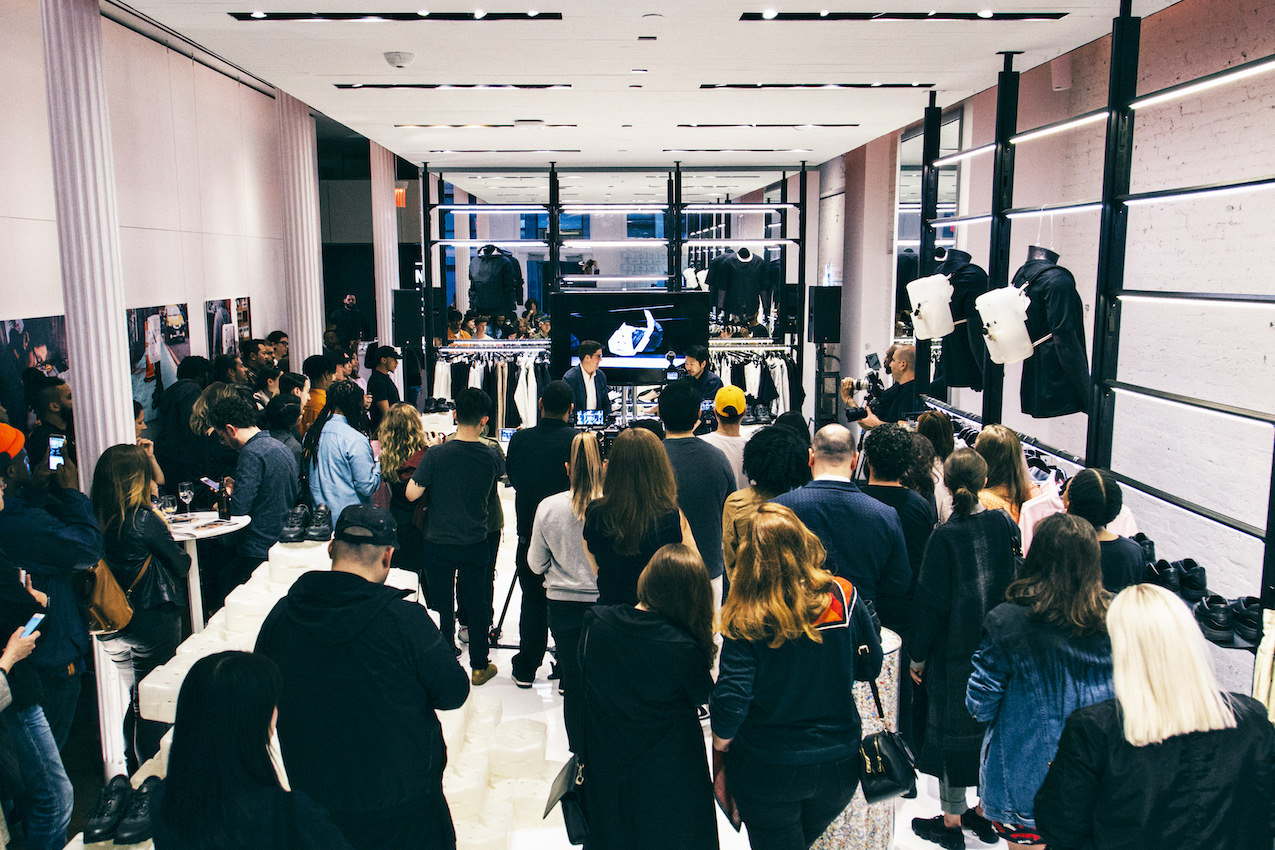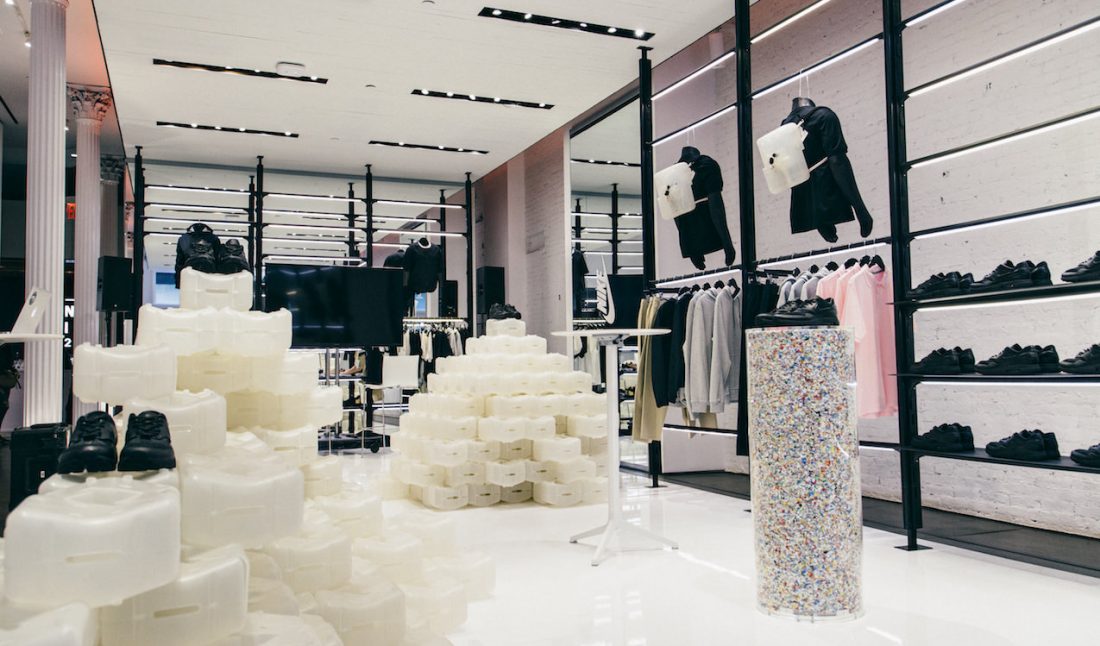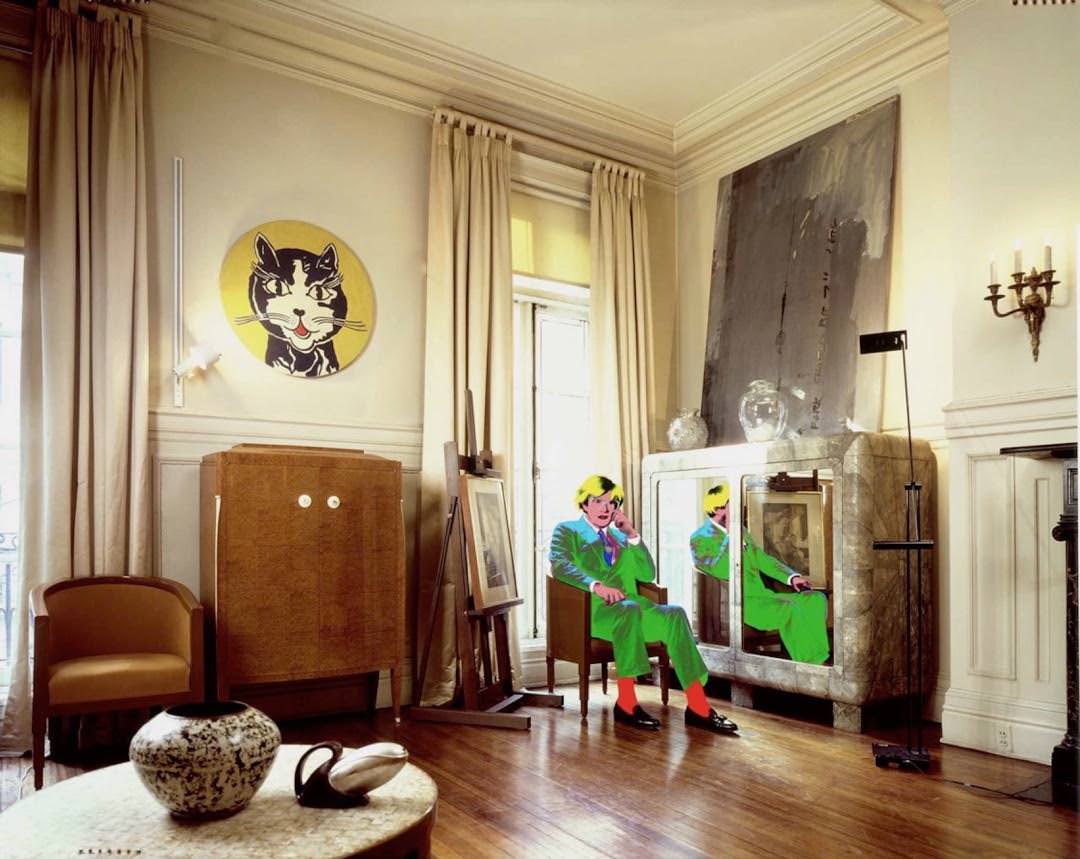Last week in New York at NikeLab, Surface’s editor-in-chief Spencer Bailey hosted an informational talk with Arthur Huang—the structural engineer, architect, and founder of MiniWiz, and the creator behind Nike’s latest shoe box. Unlike any other Nike shoe box, usually made from cardboard and featuring the same one-flap closure, Huang has created a multi-functional and completely recyclable box. For the NikeLab Air Max Ultra 2.0, the box is made entirely of polypropylene—post-consumer materials—and made from about 180 disposable plastic coffee lids. It is semi-transparent, has ventilation holes, and has an interlocking component (allowing for up to 24 boxes to stack on top of each other without any concaving). The holes also double as a slot to insert a rope or a tie—making it an easy transition from shoe box to backpack, as demonstrated on mannequins at the event.
Huang’s been collaborating with Nike for several years now, but it was his first time speaking in public on behalf of the brand in terms of recycling. He explained that Nike has previously hired on MiniWiz to revamp many of its interior spaces. Most of the display cases are made entirely of recycled electronic waste, such as old computers and their parts. Unbeknownst to many, Nike has been shifting toward being a more environmentally-friendly brand, in part thanks to Huang’s help.
 Courtesy of NikeLab and Surface.
Courtesy of NikeLab and Surface.
“Every time a brand launches a new shoe, they use a lot of material. And normally those [excess] materials are being thrown out without any consideration,” said Huang. “These boxes are being re-recycled and sold for money to the recyclers. Then, any company can buy that material back and make new boxes or packing material from that.”
On the topic of form following function, he said, “I think material should also follow function. Structure should follow function. Precisely, if you look deep into the structure, there should be an efficient way of using those materials… if we want to be more sustainable with how we design, or contribute to the greater good of humanity, I hope, you have to look back into what you’re actually creating on the structural level.”
 Courtesy of NikeLab and Surface.
Courtesy of NikeLab and Surface.
Nike has set a goal of a ten percent reduction in its environmental footprint by 2020 and an overall increase in the use of more sustainable materials. With its Reuse-A-Shoe program (recycling around 30 million pairs of shoes) and its ColorDry technology (dying fabrics without water, saving more than 5 million gallons of water), and the help of Huang and his MiniWiz team, too, it’s well on its way to achieving that target.











